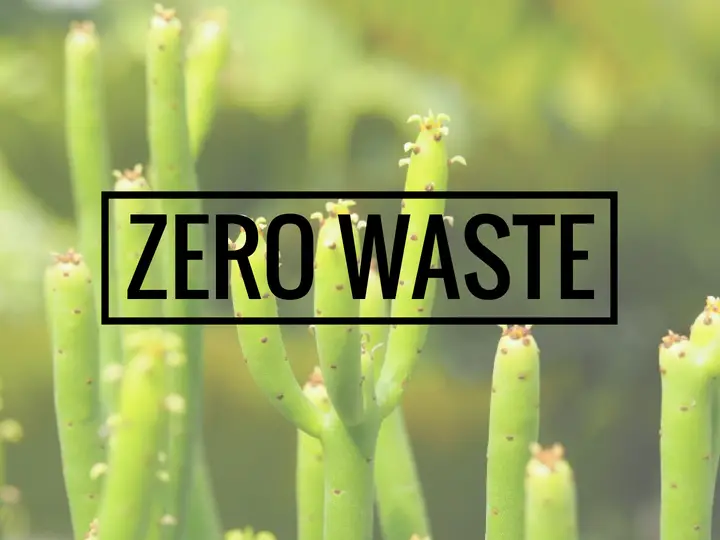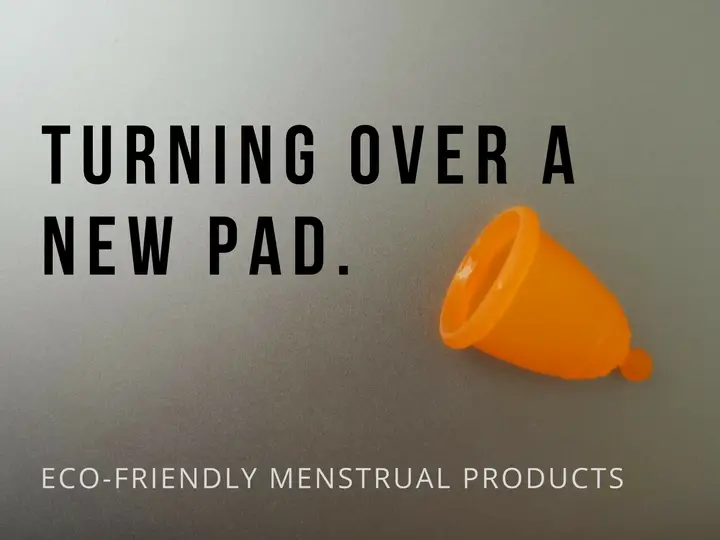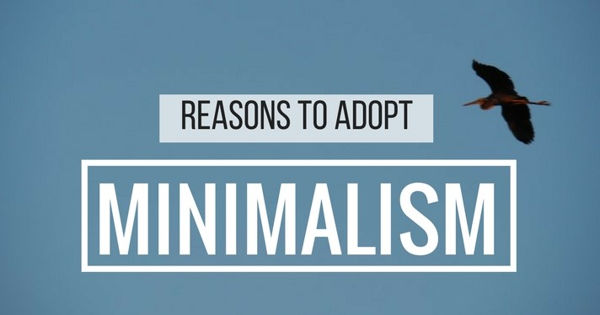Zero waste is another lifestyle concept that works well with minimalism. Both lifestyle ideologies complement each other well. If you only buy and use what you need, then you’re essentially creating less waste already. Just to be clear, zero waste is exactly what it sounds like – producing zero waste. Things like re-using the water that you rinsed your rice in, to water your plants for instance. Or opting for other alternatives to plastic.
If you want to read more about minimalism, click “Reasons to Adopt Minimalism” Otherwise, I’m gonna continue ranting on about zero waste.
Because the point is folks, it’s not enough to recycle. Recycling doesn’t rid the world of plastic. It only delays the time before the plastic ends up in the ocean or landfills. Reducing the use of plastics should be the main aim.
Topics on zero waste
- What I’ve learnt about zero waste
- My Zero Waste plan (goals)
- Getting started on zero waste
We will continue to update this post as we go along our own zero waste journey. Follow us on Facebook under travelswithsun if you want to keep up with us.
What I’ve learnt about zero waste
In general, going zero waste isn’t difficult. In fact, some of the things are so stupid simple, I wondered if I should even list them down.
Shopping
- You have to be more conscious about what you buy – Do you really need that plastic bag? Are you buying that item just because it’s on sale but you don’t need it? Or even worse, are you buying the item just because the packaging is cute????! I know I’ve been guilty of that before. Is there an alternative you can get that is not packaged in plastic?
- Always bring your reusable bag when you go out, even if you don’t intend to do any shopping. I know some people say they NEED the plastic bags for trash but if you are consciously buying less plastic covered items or composting your food scraps, you’ll find your need for trash bags reduces over time.
- Supermarkets vs local markets – I get it that sometimes you can only buy groceries after work. But shopping at your local market or butcher supports the local economy and they will use your reuseable containers if you ask them while at a supermarket (at least in Malaysia), you got to have the vegetables in a plastic bag before they weigh them and attach the price sticker – Even if it’s just one stalk of broccoli or a little onion. Something I really like in New Zealand, is that the weighing scale is at the self-pay counter – you don’t need that sticker or a plastic bag for the vegetables! Haven’t figured out the meat situation though – the lower priced meat are usually packaged in Styrofoam and plastic cling wrap >.< Got to find a local butcher at some point.
Habits
- How you do daily things- I wash my plates differently from how I used to. Something as simple as turning off the tap while soaping up the dishes can save water.
- Can you reuse the item? Dual use is always a bonus – A toothbrush that you’re meaning to throw away can be used to clean your sneakers or water bottles. And here’s one that I do that some people might find weird – I keep the napkins I wipe my mouth after having a meal out and I use it to wipe my bum later in the toilet 😉
- Between eating at a restaurant and takeaway – eat in or always have re-useable containers available in your car
- There are things I often leave on my plate because I don’t like eating them – vegetable stems, garlic, onions, parsley – I try my best to eat all of these now. Food waste will most likely end up in a landfill, rotting away producing methane gas (sometimes, there are even explosions!) which contributes to global warming. If you cannot finish your food, that’s what the re-useable food container is for. Or if you have the option to, get a smaller portion if you know you are a small eater.
Unnecessary things that have plastic-free alternatives
- A plastic free period is possible – read my previous post “Turning over a new pad (Eco-friendly menstrual products)“
- One-time use plastics – avoid these like the plague. I’m someone who takes my dental care seriously. I used to pick my teeth all the time with these little plastic dental picks that have the floss at one end, and a toothpick at the other. I stopped using those. Switched to a metal one. Other things could be declining straws in your drink. And don’t get me started on coffee. Too many people must have that morning cup en-route to work but that cup probably ends up being a one time use.
Beauty is pain – for the environment!
- Fast fashion is evil – Not only do the cheap clothes disintegrate into microscopic particles that get into water systems and eventually on our plates and in our lungs, all the unethical practices involved to make them means someone out there is working hard in unfair conditions and pathetic wages just so people can keep up with trends?? I shop MUCH LESS than I used to (In fact, i haven’t bought any clothes for a month plus, already). If I do buy clothes, I’ll only get good quality stuff or something secondhand because some people do sell their stuff after only wearing it once or not at all.
- Make-up and beauty products – I stopped using these when I got some sort of weird rash on my face last year, but even now that it’s under control, I have only being using sunscreen, lip balm and one good face moisturizer. I’m not saying everyone should stop trying to look good, but does one person really need more than 5 eye shadow palettes, 12 lipsticks, and a 10-step beauty regime where everything is packaged in plastic?? Just my thinking, but all that energy put into looking good could be used for something else that would benefit you long-term – maybe, a skill that you’ve always wanted to learn but didn’t have time?
- Hair care – I have completely forsaken shampoo and condition in plastic bottles altogether, I use the same handmade neem soap bar for everything – my face, my body, my hair, my bum, etc. I will occasionally just moisturize my hair with virgin coconut oil if it gets a little dry.
My Zero Waste plan (goals)
These are some of the goals I want to achieve, eventually. Some are tiny goals I know, but that makes them all the more achievable.
- Switching to bamboo toothbrushes (done since Sept 2018)
- Make my own toothpaste
- Switching to metal razors from plastic, disposable ones- I’m a hairy girl and I need to get rid of body hair sometimes. (done since Dec 2018)
- Grow my own fruit and vegetables via aquaponics- one day, when I have my own house. Maybe chickens and fish too cause I still cannot give up meat.
- If I ever have kids, gonna put them in cloth diapers
- Install a rainwater system at home that can be used to flush the toilets or wash the car with
- Use baking soda and vinegar for household cleaning
- Compost food waste
- Find or make my own yogurt
I’m sure there’s a lot more but these will do for now.
Getting started on zero waste
Understand your trash
I picked up this phrase from a video collaboration Lauren Singer (founder of Trash is for Tossers) did with Lucy Fink from Refinery29 (go watch the video “5 Days Of Going Garbage Free | Try Living with Lucie | Refinery29“)
“, it is enlightening). You have to know where all your trash is coming from before you can start swapping them out for plastic-free alternatives. Go ahead, your trash might surprise you.
This is a peek of ours – I didn’t include the paper packaging and cling wrap because I regrettably threw them away already.
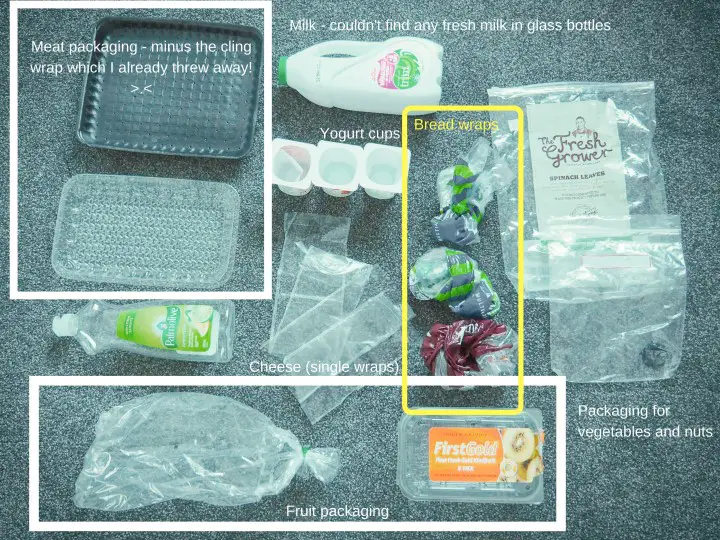
The incoming stream of plastic has got to stop. Obviously, bread, vege, meat, cheese, and yogurt are main contributors to our trash pile. @.@.
Reuse what you can
For example, from our trash pile, I was able to find second uses for most of them:
- Ziplock plastic bags – to segregate and freeze meat or keep biscuits fresh.
- Plastic and styrofoam meat trays – drawer/cupboard/shoe/shelf organizers. .
- Bread/ vegetable plastic packaging – reuse as fresh produce bags on next grocery trip
Finding alternatives
So now we know where to start. The challenging part is finding alternatives. I think the biggest hurdle in going zero waste is that the alternatives tend to be pricier. Like toilet paper. Here in New Zealand, there are two plastic package free alternatives – Green Cane and SmartAss. Both are already around three times more costly than the value-saving options in the supermarket. Am rethinking whether I need toilet paper or not. The frustrating thing is that bidet taps are not omnipresent in New Zealand (Update: 27 June 2018 – a cup works fine if you don’t have a bidet tap ^^”)
Nonetheless, we shall try and see how our search goes.
Challenges of zero waste – travelling and events
Update – 27 June, 2018
Till now, we were doing okay with bringing our re-useable bags and containers whenever we went out (in fact, we keep some spares in the car too in case we leave ours at home). But it struck me on two separate occasions just how easy it is to pile on the plastic without being aware of it. Being zero waste takes a lot of commitment in the sense that you have to be prepared for ANY occasion.
The first event was taking a certain Malaysian airlines back to Kuala Lumpur from Auckland. They had plastic for the headphones, plastic for the blanket, plastic for all the food and even the water was in a single-use plastic cup. The bathroom had a single-use cup dispenser for people to rinse their mouths with too. And don’t forget the single-use piece of plastic (or paper or whatever it is made of) to put over the toilet seat just so your bum would be protected from other people’s germs.
It only occurred to me as I was subconsciously opening the headphone plastic bag that I had brought my own earphones which could also fit into the airlines’ in-flight entertainment system. There’s a Cantonese saying that would be appropriate for that exact moment of frustration and despair. I found it hard to enjoy my in-flight meal surrounded by so much single-use plastic. I made it a point there and then that I would not make the same mistake the next flight back to Auckland.
Another occasion that caught me off guard completely was when I attended a wedding dinner at a friend’s house. They had hired a catering service for the night. Alarm bells should have been triggered in my head as this wasn’t the first time I went to a wedding. Weddings always somehow involve a lot of single-use plastic. Sure enough, this one had paper cups (those lined with plastic on the inside), the dreaded polystyrene plates and bowls plus plastic forks and spoons. I saw a lot of guests take multiple plates and bowls just so they could try out all of the food there. I ended up taking one plate and one fork throughout the night.
That event cemented my decision to make and have a zero waste kit in my bag at all times. You can see how I built my zero waste cutlery kit in the section below.
Building a zero waste cutlery kit
It’s simple really. If you know how to use chopsticks, you really just need a pair of chopsticks (be it wooden or metal) and a metal spoon to accompany it. Or you can get one of those fancy stainless steel sporks. Throw in a hankerchief and you’re set.
You could keep your set in a container or a small pouch.
Orrrrrrrrrrrrrrrr, you could invest some time to make a pretty one out of recycled fabric! This is the one I made out my mum’s dress scrap fabrics. I followed some pictures on Pinterest but couldn’t find any step by step tutorials on how to make one in the style I wanted.
This is a roll-up wrap with little pockets for your cutlery,
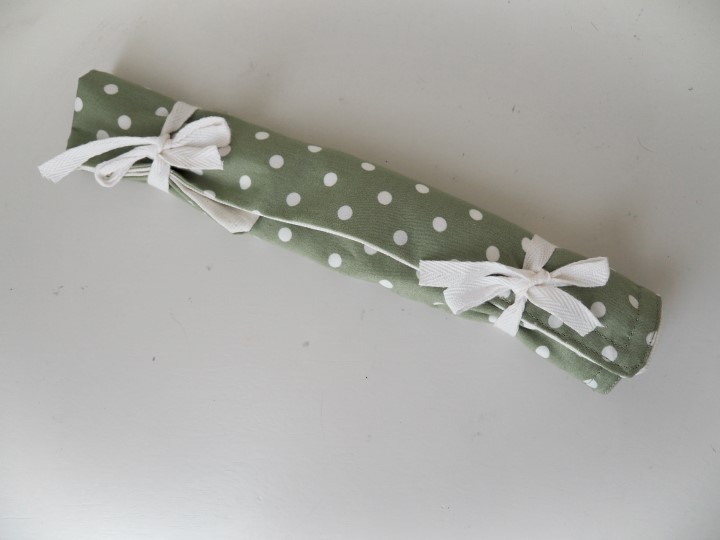
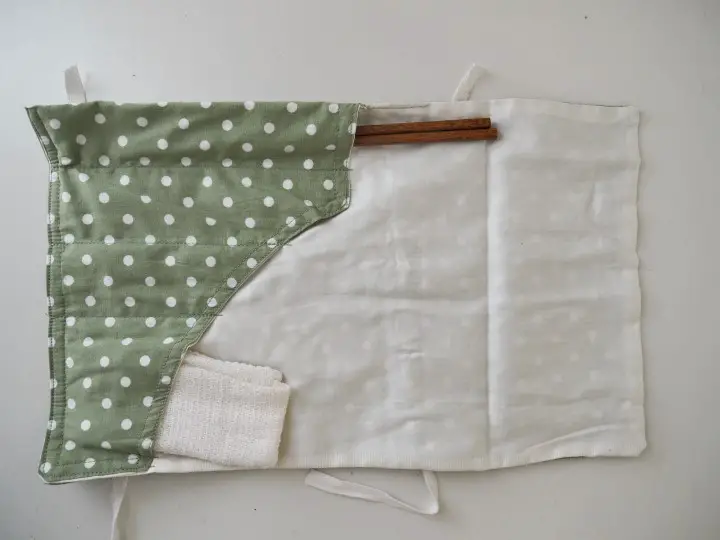
Here are the steps I took to make my wrap, watch our tutorial video here.
If you prefer a written instructions, here you go:
- Cut out 2 identically sized rectangular pieces of cloth (cut one for the patterned fabric, and another for the lining). Obviously, the height should accommodate your longest piece of cutlery. The width is up to you. Maybe you want to put in your stainless steel straws too? My wrap measurements are 13.5 inches x 9 inches.
- Repeat step 1 for the “pocket” section of the wrap. Honestly, yours needn’t be a strange shape like mine (the scrap cloth I was working with happened to be in that shape already) – another shorter rectangle will do. Or you could just cut out the entire shape in one go so you end up with two pieces of cloth instead of four like mine.
- Align the lining and patterned fabric to their matching counterparts facing front-to-front
- Stitch around the entire perimeter for both shapes from items #1 and 2 leaving a gap of about 2 inches at any corner of the bigger rectangle. IMPORTANT – Do not sew the edge between both shapes shut otherwise you won’t be able to do the next step 😉
- Turn everything inside out (use chopsticks to reach all the corners).
- Sew the gap shut. If you like, you can sew around the parameter once more to give more shape to your wrap. I didn’t to keep things simple.
- You can now sew the divisions for the pocket – the stitches for these divisions will show up on the top side of the wrap but it’s not obvious if you use a matching thread color.
- Use an iron to make a fold for the flap
- Fold down the flap, roll the wrap until it is closed the way you like it, then mark positions for the ribbons – feel free to use buttons or elastic instead!
- Sew on the ribbons – make sure they’re long enough to go around the wrap and be tied too.
And that’s it! I plan to keep this in my handbag or backpack from now on. Will hand wash it if it gets dirty.
Conclusion
Going zero waste is not that difficult. You just need to change some daily habits gradually and look for plastic-free alternatives. Save money and use your creativity to make or re-purpose something rather than buying something from a zero waste store. Those items are usually a little pricier than their plastic cousins anyways. Helps to always be prepared whenever you go out- reusable bag, coffee cup, cutlery kit, etc. There’s a high chance you will encounter plastic but it’s easily avoidable if you are prepared. Play your part in saving the environment.
Will you go zero waste? Leave a comment below.
Pin this post!
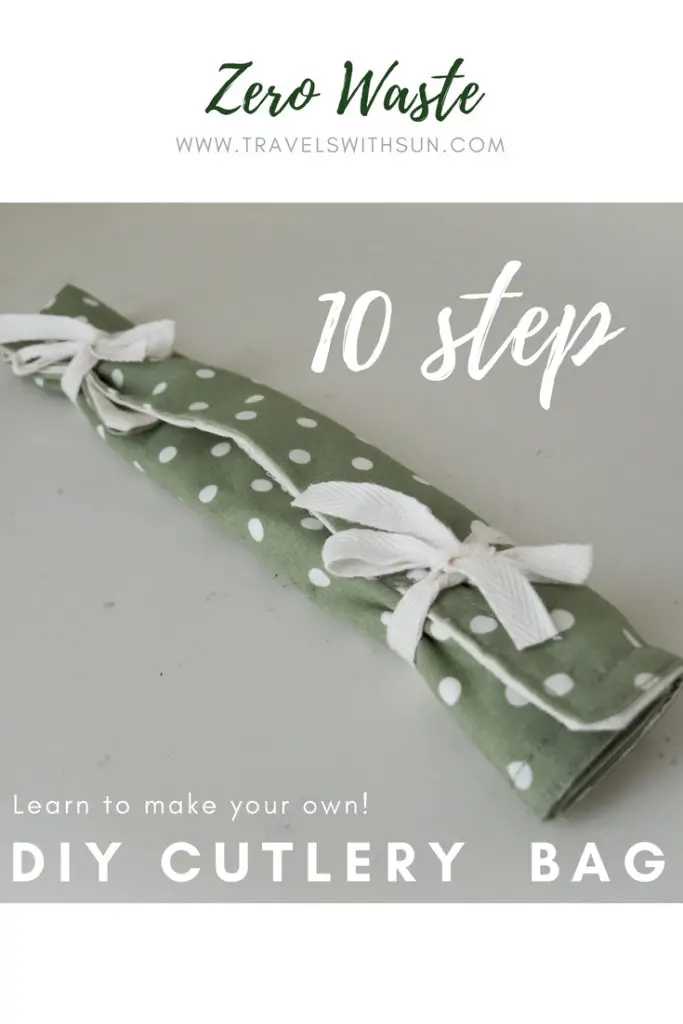
If you prefer a pencil-case sort of bag with a zip (and washable too!), check out this lovely tutorial here.

